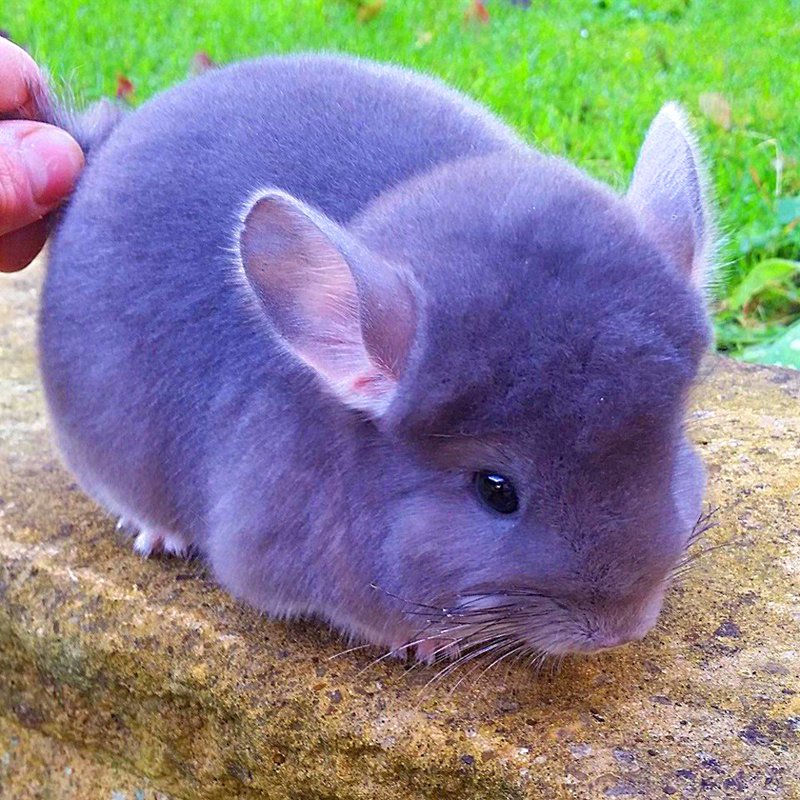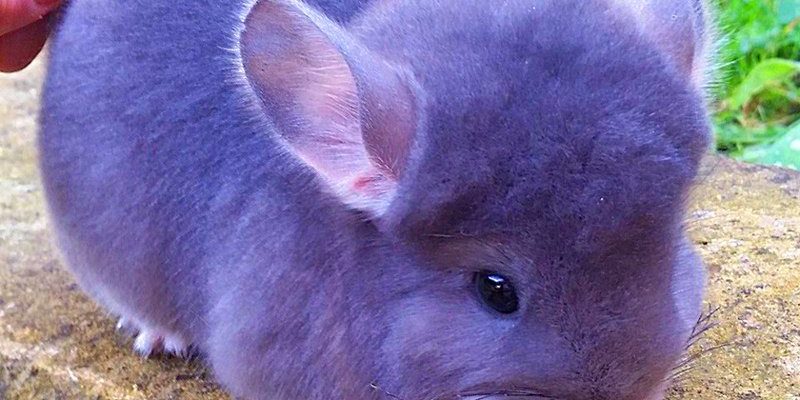
Chinchillas, especially the violet variety, are unique pets that require specific care and attention. Unlike cats or dogs, they have special needs that can sometimes surprise first-time owners. Here’s the thing: adopting a chinchilla can be a rewarding experience, but it also comes with challenges. So, grab a cup of coffee, and let’s break down what it really means to welcome a violet chinchilla into your home.
Understanding Violet Chinchillas
To start, violet chinchillas are a color mutation of the standard chinchilla. They have a stunning, soft coat that ranges from a greyish-lavender to a deeper violet shade. This unique coloring isn’t just for show; it’s one of the many reasons people fall in love with them! But beauty isn’t everything; it’s crucial to understand their care requirements.
You might be wondering, “How do violet chinchillas differ from other types?” Well, aside from their color, they generally share the same traits as their chinchilla cousins. They’re social, active, and need a spacious habitat to keep them happy and healthy. They thrive on interaction and mental stimulation, which can make them delightful companions when given the right environment.
One key aspect is their diet, which primarily consists of hay, pellets, and fresh water. Some chinchilla owners enjoy the ritual of feeding time, but it’s vital to avoid overfeeding or offering the wrong types of treats, as chinchillas have sensitive digestive systems.
The Pros of Owning a Violet Chinchilla
Most pet lovers will tell you about the joys of chinchilla ownership. Here are some of the pros to consider:
- Social Creatures: Violet chinchillas are known for their playful and social nature. They can bond closely with their owners and can even recognize individual voices, responding with excitement when called.
- Low Maintenance Grooming: Their fur doesn’t require much grooming compared to other pets. They do a great job of keeping themselves clean, reducing the need for regular baths.
- Unique and Beautiful: Violet chinchillas are strikingly beautiful, often attracting compliments and admiration. This unique coloring can make you the talk of the town among pet enthusiasts!
Imagine cuddling up with a chinchilla, feeling its soft fur against your skin while it nibbles on a treat. The joy they bring can be infectious, making them perfect for families or even individuals looking for companionship.
The Cons of Owning a Violet Chinchilla
As delightful as these creatures are, they aren’t without their cons. Here are a few challenges that come with chinchilla care:
- Cost: Violet chinchillas can come with a hefty price tag compared to other pets. This includes initial costs for their habitat, food, and veterinary care.
- Specialized Care: They have specific housing and temperature needs. Chinchillas can be sensitive to heat; temperatures should not exceed 75°F. Creating an ideal habitat requires attention and sometimes upfront investment.
- Not Always Cuddly: While many chinchillas enjoy interaction, others may be shy or skittish. You might need to work on building trust, which can take time and patience.
You might find yourself needing to create a cozy, quiet space for your chinchilla, away from loud noises and curious pets. It’s not just about having a pet; it’s about creating a supportive environment for your new friend.
Bonding with Your Violet Chinchilla
Building a bond with your chinchilla can take time, but it’s worth every moment. Start by spending time near their habitat, allowing them to become familiar with your presence. Here are some tips for establishing that connection:
- Gentle Interaction: Start with short, gentle interactions. Speak softly and allow them to approach you at their own pace.
- Treats Are Your Friend: Offer healthy treats like dried fruits or vegetables to encourage interaction. This creates positive associations with you.
- Playtime is Key: Schedule regular playtime outside their cage, but ensure the environment is safe. Chinchillas love to explore!
Over time, you’ll learn your chinchilla’s quirks and preferences, making your bond stronger. It’s about understanding each other and discovering what makes your chinchilla tick.
Housing and Habitat Requirements
Creating a comfortable living space is vital for your chinchilla’s health. Their habitat should mimic their natural environment as much as possible. Here are some essential housing requirements:
- Spacious Cage: A multi-level cage with plenty of space for jumping and climbing is ideal. Look for sturdy materials that can withstand their chewing habits.
- Hiding Spots: Provide cozy hiding spots with wooden tunnels or small hideouts, as chinchillas love to feel secure.
- Temperature Control: Ensure the living area is cool and dry. Invest in fans or air conditioning if needed, as chinchillas can suffer from heat stress.
When you set up their cage, think of it as building a little chinchilla mansion. Your pet will appreciate the effort, and you’ll enjoy watching their playful antics in a well-designed space.
Feeding and Nutrition
Feeding your violet chinchilla is more than just filling a bowl. It’s about providing a balanced diet that keeps them healthy for life. Their diet mainly consists of:
- Timothy Hay: This should be the main component of their diet. It’s high in fiber and helps maintain their digestive health.
- Chinchilla Pellets: High-quality pellets designed for chinchillas provide essential nutrients. Look for those without added seeds or fruits.
- Limited Treats: Keep treats to a minimum to avoid digestive issues. Dried herbs, flowers, or small pieces of fruit can be great options, but moderation is key.
As you prepare their meals, envision it as an art project—balancing colors, textures, and flavors while ensuring their health. The right diet leads to a happy, energetic chinchilla.
Bringing a violet chinchilla into your life can be an exciting adventure filled with love and joy. However, it’s crucial to assess whether you’re ready for the commitment they require. Weighing the pros and cons helps ensure that both you and your chinchilla will thrive in your new life together.
Honestly, if you’re looking for a unique pet that requires a bit more attention but offers a lot of love in return, a violet chinchilla might just be the ideal companion. Take your time to learn and prepare, and you’ll be well on your way to a fulfilling relationship with your new furry friend. With the right care, you can create a happy home for both you and your chinchilla, filled with warmth and cuddles.

